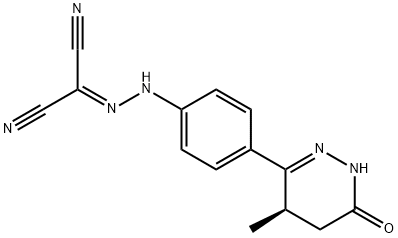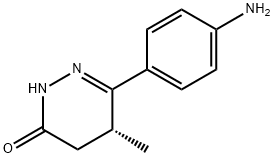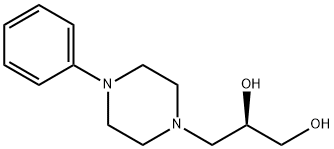Levosimendan , ≥98% , 141505-33-1
Synonym(s):
(-)-OR-1259;(R)-Simendan;2-[2-[4-[(4R)-1,4,5,6-Tetrahydro-4-methyl-6-oxo-3-pyridazinyl]phenyl]hydrazinylidene]-propanedinitrile;OR 1259;R)-((4-(1,4,5,6-Tetrahydro-4-methyl-6-oxo-3-pyridazinyl)phenyl)hydrazono) propanedintrile
CAS NO.:141505-33-1
Empirical Formula: C14H12N6O
Molecular Weight: 280.28
MDL number: MFCD00867135
EINECS: 663-528-6
| Pack Size | Price | Stock | Quantity |
| 100MG | RMB126.40 | In Stock |
|
| 50MG | RMB249.60 | In Stock |
|
| 500MG | RMB399.20 | In Stock |
|
| 250mg | RMB683.20 | In Stock |
|
| 1g | RMB2036.80 | In Stock |
|
| others | Enquire |
PRODUCT Properties
| Melting point: | 216-219°C (dec.) |
| alpha | D25 -566° (tetrahydrofurane/methanol) |
| Density | 1.33±0.1 g/cm3(Predicted) |
| storage temp. | room temp |
| solubility | DMSO: ≥20mg/mL |
| form | powder |
| pka | 6.3(at 25℃) |
| color | yellow |
| optical activity | [α]/D -500 to -650°, c = 0.5 in THF |
Description and Uses
Levosimendan was introduced in Sweden as an i.v. infusion for the treatment of acute heart failure or refractory symptoms of chronic heart failure in cases where conventional treatment (e.g., diuretic or ACE inhibitor) is not sufficient. Levosimendan is the (R)- enantiomer of simendan that belongs to the same class as pimobendan (Boehringer Ingelheim).
Levosimendan is a positive inotropic agent that acts by sensitising troponin C to Ca2+, prolonging actin-myosin cross-bridge formation and therefore increasing contractility. This is an energy-independent process and therefore does not increase myocardial oxygen demand. Levosimendan also causes vasodilatation by opening ATP-sensitive K+ channels in vascular smooth muscle, reducing pre- and afterload and improving myocardial oxygen supply. It may have a role in the management of acute heart failure and postresuscitation myocardial dysfunction.
Safety
| Symbol(GHS) |  GHS07 |
| Signal word | Warning |
| Hazard statements | H302-H312-H332 |
| Precautionary statements | P280 |
| Hazard Codes | Xn |
| Risk Statements | 20/21/22 |
| Safety Statements | 36/37 |
| WGK Germany | 3 |
| RTECS | TY1570210 |
| HS Code | 2933.99.7500 |
| Toxicity | LD50 in male, female mice, male rats (mg/kg): 156, 152, 103 orally; 32, 50, 57 i.v. (Pagel) |




![2-[2-[4-(2-Azidotetrahydro-3-Methyl-5-oxo-2-furanyl)phenyl]hydrazinylidene]propanedinitrile (Mixture of DiasteroMers)](https://img.chemicalbook.com/CAS/GIF/252638-01-0.gif)

